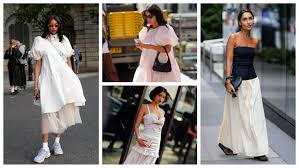The return of the drop-waist dress — a silhouette made famous in the 1920s flapper era and revived again in the early 2000s — is generating controversy across Australia. As fashion retailers reintroduce the style for the upcoming spring-summer 2025 season, many shoppers are voicing strong opposition online, calling the design unflattering and exclusionary for most body types.
Consumers Push Back Against the Trend
Characterized by a low seamline that falls around the hips rather than the natural waist, the drop-waist silhouette has become a polarizing topic on platforms like TikTok and Instagram. Dozens of fashion influencers and everyday shoppers have posted videos and photos criticizing the trend, arguing that it caters only to narrow body proportions and ignores the call for body-positive fashion.
“I tried one on, and it made me look completely shapeless,” one user wrote under a viral fashion reel. “Why are brands bringing back trends that only suit one type of body?”
Industry Experts Weigh In
Retail analysts note that while the drop-waist dress offers a nostalgic nod to both vintage glamour and Y2K nostalgia, it sharply contrasts with today’s preference for high-waisted or relaxed silhouettes that flatter a wider range of figures. Experts suggest that consumer sentiment reflects a deeper shift toward inclusivity and practicality over runway aesthetics.
Despite the backlash, major labels continue to feature drop-waist designs in their collections, experimenting with modern fabrics, layering, and asymmetrical details to update the look. Some designers defend the revival, arguing that it challenges conventional notions of femininity and body shape.
A Broader Debate on Inclusivity
The debate highlights an ongoing tension in the fashion world — between trend revival and body representation. As one fashion commentator explained, “The drop waist is beautiful on the runway, but for most people, it’s not wearable — and consumers are making that clear.”
Industry observers say the growing criticism underscores the need for brands to approach nostalgic revivals with sensitivity and adaptability. As inclusivity remains a defining value in modern fashion, brands that fail to reflect the diversity of real bodies risk alienating their audiences.
Ultimately, the drop-waist debate serves as a reminder that while fashion trends may cycle back, consumer expectations have evolved — with wearability, representation, and authenticity now shaping the future of style.

